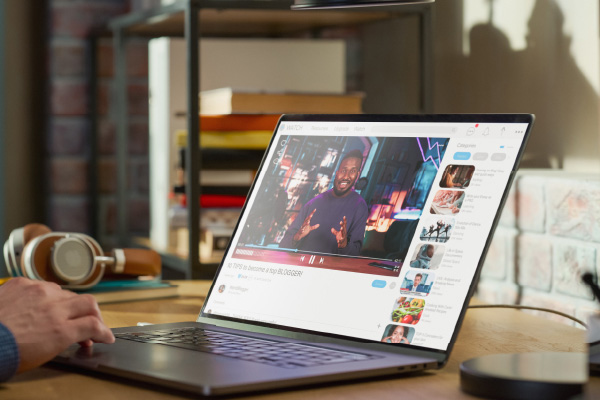In recent years, streaming algorithms have become pivotal in shaping the music industry. These algorithms, employed by major platforms like Spotify, Apple Music, and Amazon Music, have transformed how listeners discover, consume, and interact with music. As a result, the music landscape has shifted significantly, particularly in genres like rap where adaptability and innovation are key. I utilize this on my artist website stangrtheman.com.
Streaming algorithms utilize complex data analysis and machine learning to predict what a listener might enjoy based on their past behavior. This has significantly impacted music discovery, allowing artists to reach audiences they might never have accessed through traditional means. Furthermore, these algorithms influence how music is created, prompting artists to consider the optimal song length, structure, and even lyrical content to maximize streaming potential.
As these algorithms continue to evolve, they are not only redefining how music is discovered but also how it is crafted. The focus of this article is to explore their specific impact on rap music, a genre that has always thrived on evolution and change.
Understanding Rap Song Structures
Rap music is known for its dynamic and varied structures. Unlike other genres that may adhere to more traditional verse-chorus formats, rap often experiments with unconventional forms to convey messages, tell stories, or showcase lyrical prowess. Common elements of rap songs include verses, hooks, bridges, and sometimes ad-libs and outros.
The structure of a rap song is critical as it influences how the message is delivered and received. Versatility in structure allows artists to emphasize certain parts of their narrative or to create memorable hooks that resonate with listeners. This flexibility is one of the reasons rap has been able to evolve rapidly and adapt to new trends and technologies.
As streaming algorithms gain importance, they are beginning to impact these structures. Artists now consider how the format of their songs might affect streaming success, leading to strategic decisions about song length, the placement of hooks, and the introduction of catchy elements early in the track to capture and retain listener attention.
The Role of Streaming Algorithms in Music Discovery
The role of streaming algorithms in music discovery cannot be overstated. These algorithms analyze data such as listening habits, skips, repeats, and playlist additions to curate personalized playlists and recommendations for users. For artists, this means that getting their songs featured in algorithm-driven playlists can significantly boost exposure and streaming numbers.
For rap artists, this presents both opportunities and challenges. While the potential for reaching new audiences is vast, competition is fierce. Algorithms favor songs that engage listeners quickly, leading many artists to tailor their music to fit this model. Tracks that are more likely to be skipped or not fully played struggle to gain traction in this new ecosystem.
Streaming algorithms can also democratize music discovery by giving independent and emerging artists a platform. By analyzing listener preferences rather than relying solely on label promotions, these algorithms can help surface unique voices and innovative sounds that might otherwise go unnoticed.
How Streaming Algorithms Influence Song Length and Format
One of the most noticeable impacts of streaming algorithms on rap music is the shift in song length and format. Traditional rap tracks often exceed three minutes, allowing for extended storytelling and lyricism. However, streaming algorithms tend to favor shorter songs, as they result in more plays and higher streaming counts.
This shift has led many artists to create tracks that are concise and to the point. The trend towards shorter songs is evident in the increased prevalence of tracks that last around two to three minutes. This change not only aligns with algorithmic preferences but also caters to shorter attention spans in the modern listening environment.
Moreover, the format of songs has adapted to ensure that the most engaging elements are presented upfront. The hook, a critical component of rap music, is often introduced earlier in the track to captivate listeners quickly. This strategic structuring aims to increase the likelihood of the song being added to playlists and replayed, thus boosting its algorithmic visibility.
Case Studies: Successful Rap Songs and Their Streaming Strategies

To illustrate the impact of streaming algorithms on rap music, let’s examine some case studies of successful rap songs and the strategies they employed to maximize streaming potential.
- Lil Nas X – “Old Town Road”: This track broke numerous records and became a cultural phenomenon. Its success can be attributed, in part, to its brevity and catchy hook, which fit perfectly with streaming algorithms that favor repeat listens. Additionally, its blending of genres appealed to a wide audience, further amplified by algorithmic recommendations.
- Drake – “In My Feelings”: Drake’s track capitalized on virality, aided by a dance challenge that went viral on social media. The song’s catchy chorus and relatable themes made it a favorite for playlists, demonstrating how external factors, combined with algorithmic support, can propel a song to success.
- Cardi B – “Bodak Yellow”: Cardi B’s breakthrough hit excelled due to its infectious beat and memorable lyrics. The song’s structure, with a strong, repetitive hook and engaging verses, made it a staple on algorithm-driven playlists, boosting its reach and popularity.
These examples highlight how strategic decisions in song crafting, combined with an understanding of streaming algorithms, can lead to extraordinary success in the rap genre.
The Evolution of Lyrics in Response to Streaming Trends
As streaming algorithms continue to shape the music industry, the evolution of lyrics in rap songs has been significant. Artists are increasingly aware of the need to capture listener attention quickly, often leading to impactful and memorable opening lines.
The focus on catchy hooks and memorable phrases has intensified, as these elements are crucial for ensuring a song’s inclusion in playlists and its potential for virality. As a result, some artists have shifted towards more repetitive lyrics, which are easier for listeners to remember and sing along to, enhancing the song’s shareability.
Moreover, the themes and content of rap lyrics are evolving in response to streaming trends. Songs that resonate with current cultural phenomena or tap into universal emotions are more likely to be recommended by algorithms. This has led to a rise in tracks addressing contemporary issues, personal struggles, and feel-good anthems that connect with a broad audience.
The Future of Rap Music in the Age of Algorithms
As we look to the future, the influence of streaming algorithms on rap music is likely to grow. These algorithms will continue to refine and enhance the ways they recommend music, potentially leading to even more personalized and diverse listening experiences.
Artists will need to remain agile and innovative, embracing changes in technology and listener behavior. As algorithms become more sophisticated, they may begin to predict listener preferences even more accurately, providing new opportunities for artists to connect with fans in meaningful ways.
However, the reliance on algorithms also presents potential challenges. The pressure to conform to algorithmic preferences may stifle creativity and lead to a homogenization of sound. To combat this, artists will need to balance algorithmic considerations with artistic integrity, ensuring that their unique voices and visions continue to shine through.
Tips for Artists: Adapting to Streaming Algorithm Changes
For artists navigating the world of streaming algorithms, several strategies can be employed to enhance their music’s visibility and success:
- Optimize Song Length: Consider crafting songs that are concise and engaging, aligning with the algorithm’s preference for shorter tracks.
- Focus on Catchy Hooks: Ensure that hooks are memorable and introduced early in the song to capture listener attention quickly.
- Leverage Social Media: Use platforms like TikTok and Instagram to create viral moments that can drive streams and algorithmic recommendations.
- Stay Informed: Keep up with changes in streaming platforms’ algorithms and adapt your strategies accordingly to maintain visibility.
- Engage with Fans: Foster a strong connection with your audience through interactive content and live performances to build a loyal listener base.
By implementing these strategies, artists can navigate the challenges of streaming algorithms while maintaining their creative vision.
Streaming Platforms and Their Unique Algorithms
Each streaming platform utilizes its own unique algorithm to recommend music and curate playlists. Understanding these differences can help artists tailor their strategies to maximize exposure on each platform.
- Spotify: Known for its personalized playlists like Discover Weekly and Release Radar, Spotify’s algorithm focuses on user engagement metrics such as skips, saves, and repeat listens. Artists should aim to create tracks that encourage these actions.
- Apple Music: Apple Music’s algorithm emphasizes editorial curation, with human editors playing a significant role in playlist creation. Building relationships with curators and featuring in editorial playlists can enhance visibility.
- Amazon Music: This platform’s algorithm integrates data from user activity and purchasing habits. Engaging with fans through Amazon’s ecosystem, including Alexa-enabled devices, can boost streaming numbers.
- YouTube Music: YouTube’s algorithm is heavily influenced by video content. Creating compelling music videos and engaging visuals can increase a song’s chance of being recommended.
By understanding these nuances, artists can better position themselves for success across multiple streaming platforms.
Conclusion: The Lasting Effects of Streaming Algorithms on Rap Music
The impact of streaming algorithms on rap music is profound and far-reaching. These algorithms have not only transformed how music is discovered and consumed but also how it is created and marketed. As we move forward, the relationship between streaming technology and rap music will continue to evolve, presenting both challenges and opportunities for artists.
By adapting to these changes and embracing innovation, artists can harness the power of streaming algorithms to reach new heights in their careers. It’s essential to balance algorithmic considerations with artistic integrity, ensuring that the heart and soul of rap music remain intact.
As we embrace this new era, I encourage artists and listeners alike to engage with the dynamic and ever-changing world of streaming music. Together, we can shape the future of rap music in exciting and unprecedented ways.
Thank you for reading. If you’re an artist looking to thrive in the streaming era, consider exploring new strategies and staying informed about the latest trends in streaming technology. Your next hit could be just around the corner!
STANGR THE MAN aka Stevie The Manager—stands as a battle-hardened lyrical strategist who’s conquered the game from both sides of the glass. With street credibility and executive authority, he delivers unfiltered truth that only comes from someone who’s both crafted platinum verses and negotiated seven-figure deals. LIT NIGHTZ NEWS isn’t just another hip-hop platform—it’s the raw, uncompromising voice that’s setting fire to industry facades while other publications play it safe. When mainstream media serves watered-down narratives, Stangr brings the pure, undiluted perspective that real heads have been starving for. This isn’t content—it’s ammunition for those who demand authenticity in a culture built on keeping it real. Check out my hip hop blog!







